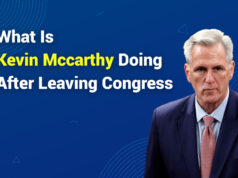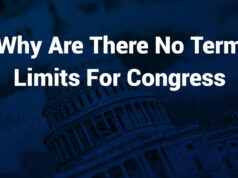The question of who killed the United Healthcare CEO has gripped public attention and ignited speculation across news outlets, social media, and corporate circles. As one of the most influential figures in the American healthcare industry, the sudden and suspicious death of UnitedHealthcare’s top executive has led many to search for answers. In a high-stakes world dominated by billion-dollar decisions, even the death of a single leader can spark a flurry of questions, conspiracy theories, and investigations.
In this in-depth article, we explore the timeline of events, known facts, ongoing investigations, and potential motives behind the question of who killed the United Healthcare CEO. With corporate rivalries, financial tensions, and legal entanglements possibly playing a role, it’s essential to dig deep and separate fact from fiction.
Whether you’re curious about how this tragedy unfolded or following developments closely, this comprehensive guide provides everything you need to know. From initial reports to law enforcement updates, we’ll walk through each aspect of the case and highlight critical points to remember. If you’re seeking the truth behind who killed the United Healthcare CEO, this is the place to start.
Who killed the United Healthcare CEO?
As of now, the case remains under investigation. Authorities have not released a confirmed suspect. Multiple individuals are being questioned, and the investigation is ongoing as officials work to piece together the motives and circumstances surrounding the death.
What Happened to the United Healthcare CEO?
The unexpected and tragic death of the United Healthcare CEO sent shockwaves through both the healthcare industry and corporate America. Initial news reports painted the incident as sudden and without warning, leaving no signs of personal or professional distress. Within hours, media outlets across the country were dominated by a single, unsettling question: Who killed the United Healthcare CEO?
Authorities quickly confirmed that the death was being treated as suspicious. While the official cause remained undisclosed initially, insiders revealed that foul play had not been ruled out. Behind the scenes, speculation mounted. Whispers of corporate conflicts, internal disputes, and even financial irregularities began to surface among industry insiders.
Theories emerged as the investigation progressed. Some believed disgruntled employees with insider knowledge could be involved. Others suspected rival corporations had something to gain from the destabilization of United Healthcare’s leadership. A few even questioned if the motive might have stemmed from the CEO’s personal life or connections beyond the boardroom—perhaps someone not directly tied to corporate affairs but linked through something entirely unexpected, like shared interests or mutual acquaintances on lighter topics such as cute names for pets or children that surfaced during social interactions.
Investigators examined surveillance footage, executed multiple search warrants, and questioned family, colleagues, and associates. Still, officials remained tight-lipped. As the public awaits clarity, the question of who killed the United Healthcare CEO remains unanswered, shrouded in mystery and unresolved tension.
Events That Led to the CEO’s Death
Several unsettling developments unfolded in the weeks before the CEO’s death, offering possible clues into the mounting pressures he faced. These events paint a clearer picture of what may have contributed to the tragedy, from internal disputes to external threats.
Tensions Within the Executive Team
In the months following the United Healthcare CEO’s death, internal friction within the executive leadership team had reportedly intensified. Sources close to the company mentioned increasingly hostile boardroom debates concerning strategic direction, cost-cutting measures, and future investments. The pressure of leading one of the largest healthcare providers during a volatile economic period may have only amplified the divisions among top-level executives.
Financial Investigations Into United Healthcare
Simultaneously, whispers of federal scrutiny began circulating. Rumors suggested ongoing investigations into questionable accounting practices and irregular financial reporting. Several whistleblowers allegedly highlighted concerns, hinting at misrepresented earnings and misallocating corporate funds. While these claims remained unofficial, the timing raised eyebrows, especially in light of the CEO’s unexpected death.
CEO’s Sudden Change in Behavior
Those closest to the CEO noticed a striking shift in his behavior. Typically calm, confident, and focused, he had become noticeably withdrawn and visibly stressed in recent weeks. Trusted colleagues described him as distracted and increasingly preoccupied, often skipping meetings or appearing detached during critical discussions.
Security Breaches and Threats
Adding to the tension, the company had experienced minor yet suspicious security incidents. Anonymous threats had reportedly been directed at the CEO and corporate headquarters. Although a prior breach had been deemed non-threatening, in hindsight, it may have carried more weight than initially thought.
Final Public Appearance
The CEO’s last public appearance was at a major healthcare conference. Witnesses observed that he seemed unusually tense and departed quickly after a brief speech, avoiding the press—a sharp contrast to his usual composed demeanor.
Suspects, Motives, and Unanswered Questions
As authorities continue to investigate who killed the United Healthcare CEO, several potential suspects and motives have emerged. While no official charges have been made, the case’s complexity has led investigators to explore multiple angles, each with its implications and unanswered questions. From internal strife to external threats, the web of possibilities only seems to deepen.
- Disgruntled Employees: Recent layoffs and internal restructuring may have created tension within the organization. Some employees who lost their jobs or saw drastic changes in their roles could have developed resentment, making them persons of interest.
- Corporate Rivals: Competing healthcare corporations might have benefited from destabilizing UnitedHealthcare’s leadership. Though aggressive tactics are rarely criminal in high-stakes industries, they are not unheard of.
- Whistleblowers: Reports of financial irregularities surfaced shortly before the CEO’s death. Some believe whistleblowers, fearing exposure or retaliation, may have had motive—or at least insight into who did.
- Personal Enemies: Investigators have not ruled out motives tied to the CEO’s personal life. Individuals with personal vendettas or unresolved disputes may have played a role.
- Cybercriminals or Blackmailers: With healthcare data highly valuable, cybercriminals may have crossed into the physical world to silence a target resisting their demands.
- Boardroom Power Struggles: Internal politics and leadership conflicts escalated to dangerous levels.
Public Reaction and Media Speculation About the CEO’s Death
The sudden death of the United Healthcare CEO sparked an immediate and emotional reaction from the public, media, and financial markets. As news of the incident spread online, stock prices fluctuated and speculation surged across social media and forums. The lack of clear answers only deepened public suspicion, especially in an era where corporate accountability is often questioned.
Major news outlets and online influencers quickly raised alarming possibilities. Was this a calculated assassination? Could it be part of a larger financial cover-up? These unanswered questions added fuel to growing conspiracy theories, while official statements from the company did little to ease public concerns.
In response, United Healthcare moved to steady its operations by appointing interim leadership and reassuring investors and employees. Still, without resolution, the question of who killed the United Healthcare CEO remains a dominant and unsettling topic in both the media and public discourse.
Who Killed the United Healthcare CEO – Theories and Analysis
With no definitive suspect identified, a variety of compelling theories have surfaced in the wake of the United Healthcare CEO’s death. Each presents a different perspective on what could have motivated the tragic event, drawing from corporate dynamics and external threats. Below are the most discussed possibilities:
- Internal Conflict Within the Company: Tensions among executive leadership may have escalated beyond control. Long-standing rivalries or high-stakes power struggles could have pushed someone internally to act out of ambition or desperation.
- Deliberate Attack by Corporate Rivals: In a fiercely competitive industry, some believe a competing organization may have employed unethical means to disrupt UnitedHealthcare’s operations and create instability at the top.
- Legal and Financial Vulnerabilities: Rumors of pending legal scrutiny or financial misconduct suggest the CEO may have been entangled in sensitive matters. Eliminating him could be a way to halt damaging disclosures.
- Escalation of Cyber Threats: UnitedHealthcare had reportedly faced cybersecurity issues. Analysts speculate that a data breach or blackmail situation may have become a physical threat, with the CEO as a direct target.
- Unrelated Criminal Incident: Not all experts agree it was targeted. The CEO could have been an unintended victim of a broader criminal act, mistaken for someone else, or caught in the wrong place at the wrong time.
- Future Discovery Through Evidence: Digital forensics, internal leaks, or legal proceedings may eventually provide the answers to who killed the United Healthcare CEO, but until then, theories continue to dominate public discourse.
Conclusion
The mystery surrounding who killed the United Healthcare CEO continues to captivate and unsettle both the corporate world and the public. Despite ongoing investigations, detailed surveillance reviews, and widespread media attention, no solid answers have surfaced. A maze of theories and whispers remains, with little confirmed fact.
This case is a stark reminder that leadership, no matter how secure it may seem, is not immune to chaos or threat. In a landscape where speculation often races ahead of truth, uncertainty breeds mistrust.
FAQ’s
Has a suspect been named in the United Healthcare CEO’s death?
No, law enforcement officials have not identified any suspects at this time. The investigation remains active, with authorities exploring multiple leads and theories.
What was the cause of death?
While the exact cause of death has not been publicly disclosed, authorities have stated the circumstances are suspicious and foul play has not been ruled out.
Is there any surveillance footage related to the incident?
Yes, investigators have reviewed surveillance footage from nearby locations, though no definitive or publicly released evidence has yet emerged to identify a suspect.
Was the CEO under investigation before his death?
There are reports of internal audits and whistleblower concerns involving financial practices, but law enforcement has not officially confirmed if the CEO was a target.
How is UnitedHealthcare responding to the situation?
United Healthcare has implemented interim leadership, works closely with law enforcement, and actively communicates with stakeholders to maintain business stability.














